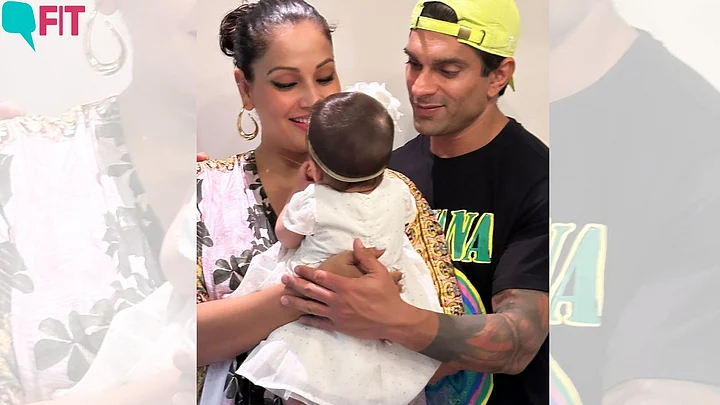(Through the Sugar Smart campaign, FIT has been telling stories of individuals and communities combating diabetes. Do you have a question for a diabetologist? Write to us at fit@thequint.com, and get it answered by a doctor.)
Actor Bipasha Basu, in an Instagram live with actor Neha Dhupia, spoke about her family's journey after her daughter was diagnosed with Ventricular Septal Defect (VSD).
"I got to know on the third day after having my baby, that she was born with two holes in her heart."
She has narrated the infant's journey from the diagnosis to the surgery, stating: "Those six hours when she was in the OT my life felt like it had stopped."
What is VSD? Here's a short primer.
What is Ventricular Septal Defect (VSD)?
VSD is one of the most common Congenital Heart Defects (one which is present at birth).
Simply explained it is a hole in the heart; it is the absence of the muscles or membranes which separate the various chambers of the heart. It happens during pregnancy when the wall is not developed.
This typically occurs in the lower chambers of the heart, between the right and the left ventricle.
This absence leads to the mixing of the blood since the high pressure in the left ventricle pushes the blood to the right ventricle.
This leads to greater blood pressure in the lungs. Which can cause problems with the lungs, breathing, etc.
Who does VSD affect?
It is common among infants at birth, and can be diagnosed by a medical expert. The cases of adults developing VSD are rare as it can develop in adults as a side effect of heart-attack.
What are the causes of VSD?
There are no causes which have been pinned in the case of VSD yet.
However, it is seen to be more common in premature babies and those with genetic conditions.
What are some of the symptoms of VSD?
In most cases, the VSD is very small and there are no symptoms for the same as it does not cause any kind of dysfunction in the body.
But in other cases where the VSD is medium or large parents can look out for the following symptoms:
Frequent Respiratory Infections
Shortness of breath/trouble breathing
Excessively sweating during feeding or fatigue
Slow weight gain in the infant (commonly known as failure to thrive)
In adults as well similar symptoms may be visible including:
Difficulty breathing
Slightly higher risk of inflammation because of heart infections
If you experience any kind of difficulty breathing, it is crucial to get it checked by the doctor.
How can VSD be diagnosed?
VSD is typically diagnosed after birth by a medical expert. They check for irregularities or changes in the sound of the heart beat. This can be by a physician as well with the use of a stethoscope.
The heart creates a sound which is called the ‘heart murmur’ which is different from the regular heartbeat caused by the space in the heart. Following this, a series of medical tests are done to confirm diagnosis.
What are the treatments? Is there a cure?
Once diagnosed the VSD can be treated.
Most of the VSDs are very small in size and will close up on their own by the age of 6 and therefore do not require a separate treatment.
However in cases where the space is larger treatments will include surgery or transcatheter procedure.
The surgery is advised to be performed by 6 months of age and not delayed. It is a cure and does not alter the life expectancy of the person in their life to come.
The transcatheter procedure involves placing a catheter device in place of the hole. Over a period of time the tissues will grow around it completely shutting the hole.
(At The Quint, we question everything. Play an active role in shaping our journalism by becoming a member today.)
